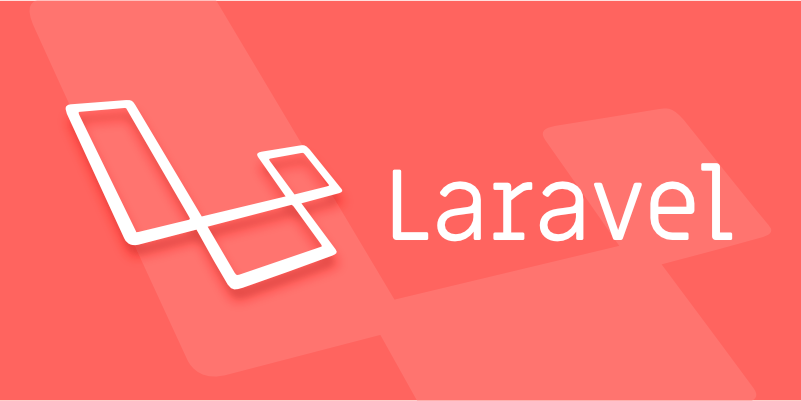To use Laravel queues effectively, first configure the queue driver in .env and config/queue.php, then create and dispatch jobs via Artisan, prioritize with different queues, handle exceptions, monitor failed jobs via the failed_jobs table, retry them manually or automatically, scale workers with supervisor or Laravel Horizon, and optimize performance with timeouts and memory limits. 1. Set QUEUE_CONNECTION to redis or database for production. 2. Generate jobs with php artisan make:job and implement logic in handle(). 3. Dispatch jobs immediately or delay them with onQueue() and delay(). 4. Prioritize jobs using different queue names. 5. Handle exceptions and enable retries with --tries=3. 6. Create failed_jobs table via migration to log failures. 7. Retry failed jobs manually with php artisan queue:retry all. 8. Monitor logs and failed jobs for debugging. 9. Scale with multiple workers via --queue and --sleep options. 10. Use Laravel Horizon for Redis-based monitoring and management.

Laravel queues are a powerful tool when you need to process background tasks without delaying the main application flow. If you're dealing with sending emails, processing images, or syncing data with external services—queues let you defer these operations to run in the background.

Here’s how to make them work well for your use case.

Setting up the queue driver
Before diving into writing jobs, make sure your queue driver is set up correctly. Laravel supports several drivers like sync, database, redis, and even Amazon SQS.
- For local development,
syncworks fine—it runs the job immediately. - In production,
redisordatabaseis better because they allow asynchronous processing.
To configure it:

- Open
.env - Set
QUEUE_CONNECTION=redis(or database) - Make sure your Redis or database connection details are correct in
config/queue.php
Also, don’t forget to run the queue worker using php artisan queue:work. Otherwise, nothing will get processed.
Creating and dispatching jobs
You can generate a new job using Artisan:
php artisan make:job ProcessImageUpload
Inside the handle() method, put the actual logic—like resizing an image or uploading to S3.
When you want to dispatch a job, do it like this:
ProcessImageUpload::dispatch($image);
Or if you want to delay it:
ProcessImageUpload::dispatch($image)->onQueue('high')->delay(10);A few tips:
- Use different queues (
default,high,emails) to prioritize certain jobs. - Don’t pass large objects; instead, pass IDs and fetch inside the job.
- Handle exceptions gracefully—jobs should fail safely and retry if needed.
Monitoring and debugging failed jobs
Jobs sometimes fail, especially when dealing with external APIs or timeouts. Laravel has a built-in way to handle that.
Failed jobs go to the failed_jobs table by default. To create it:
php artisan queue:failed-table php artisan migrate
If a job fails, Laravel won’t retry it automatically unless you specify:
php artisan queue:work --tries=3
You can also manually retry failed jobs:
php artisan queue:retry all
If you’re having issues:
- Check logs in
storage/logs/laravel.log - Look at failed job entries to see what went wrong
- Test jobs locally before pushing to production
Scaling queues effectively
Running a single worker isn't always enough. When traffic spikes, you might need more workers or even supervisor processes to keep things running smoothly.
Use tools like Laravel Horizon if you're using Redis. It gives you a dashboard to monitor job throughput, failed jobs, and worker status.
For basic setups:
- Start multiple workers:
php artisan queue:work --queue=default,high --sleep=3 - Use supervisor to keep workers running continuously
- Monitor memory usage:
--memory=128limits PHP memory per job
Also consider:
- Offloading long-running jobs to separate queues
- Setting timeouts and sleep durations based on job type
- Using priorities to ensure critical jobs get processed first
That’s how Laravel queues fit into handling background tasks efficiently. You don’t need everything at once, but knowing how to structure jobs, manage failures, and scale workers makes a big difference when your app grows.
The above is the detailed content of Processing background tasks using Laravel Queues. For more information, please follow other related articles on the PHP Chinese website!

Hot AI Tools

Undress AI Tool
Undress images for free

Undresser.AI Undress
AI-powered app for creating realistic nude photos

AI Clothes Remover
Online AI tool for removing clothes from photos.

Clothoff.io
AI clothes remover

Video Face Swap
Swap faces in any video effortlessly with our completely free AI face swap tool!

Hot Article

Hot Tools

Notepad++7.3.1
Easy-to-use and free code editor

SublimeText3 Chinese version
Chinese version, very easy to use

Zend Studio 13.0.1
Powerful PHP integrated development environment

Dreamweaver CS6
Visual web development tools

SublimeText3 Mac version
God-level code editing software (SublimeText3)

Hot Topics
 What are policies in Laravel, and how are they used?
Jun 21, 2025 am 12:21 AM
What are policies in Laravel, and how are they used?
Jun 21, 2025 am 12:21 AM
InLaravel,policiesorganizeauthorizationlogicformodelactions.1.Policiesareclasseswithmethodslikeview,create,update,anddeletethatreturntrueorfalsebasedonuserpermissions.2.Toregisterapolicy,mapthemodeltoitspolicyinthe$policiesarrayofAuthServiceProvider.
 How do I install Laravel on my operating system (Windows, macOS, Linux)?
Jun 19, 2025 am 12:31 AM
How do I install Laravel on my operating system (Windows, macOS, Linux)?
Jun 19, 2025 am 12:31 AM
Yes,youcaninstallLaravelonanyoperatingsystembyfollowingthesesteps:1.InstallPHPandrequiredextensionslikembstring,openssl,andxmlusingtoolslikeXAMPPonWindows,HomebrewonmacOS,oraptonLinux;2.InstallComposer,usinganinstalleronWindowsorterminalcommandsonmac
 What are controllers in Laravel, and what is their purpose?
Jun 20, 2025 am 12:31 AM
What are controllers in Laravel, and what is their purpose?
Jun 20, 2025 am 12:31 AM
The main role of the controller in Laravel is to process HTTP requests and return responses to keep the code neat and maintainable. By concentrating the relevant request logic into a class, the controller makes the routing file simpler, such as putting user profile display, editing and deletion operations in different methods of UserController. The creation of a controller can be implemented through the Artisan command phpartisanmake:controllerUserController, while the resource controller is generated using the --resource option, covering methods for standard CRUD operations. Then you need to bind the controller in the route, such as Route::get('/user/{id
 How do I customize the authentication views and logic in Laravel?
Jun 22, 2025 am 01:01 AM
How do I customize the authentication views and logic in Laravel?
Jun 22, 2025 am 01:01 AM
Laravel allows custom authentication views and logic by overriding the default stub and controller. 1. To customize the authentication view, use the command phpartisanvendor:publish-tag=laravel-auth to copy the default Blade template to the resources/views/auth directory and modify it, such as adding the "Terms of Service" check box. 2. To modify the authentication logic, you need to adjust the methods in RegisterController, LoginController and ResetPasswordController, such as updating the validator() method to verify the added field, or rewriting r
 How do I use Laravel's validation system to validate form data?
Jun 22, 2025 pm 04:09 PM
How do I use Laravel's validation system to validate form data?
Jun 22, 2025 pm 04:09 PM
Laravelprovidesrobusttoolsforvalidatingformdata.1.Basicvalidationcanbedoneusingthevalidate()methodincontrollers,ensuringfieldsmeetcriterialikerequired,maxlength,oruniquevalues.2.Forcomplexscenarios,formrequestsencapsulatevalidationlogicintodedicatedc
 How do I escape HTML output in a Blade template using {{{ ... }}}? (Note: rarely used, prefer {{ ... }})
Jun 23, 2025 pm 07:29 PM
How do I escape HTML output in a Blade template using {{{ ... }}}? (Note: rarely used, prefer {{ ... }})
Jun 23, 2025 pm 07:29 PM
InLaravelBladetemplates,use{{{...}}}todisplayrawHTML.Bladeescapescontentwithin{{...}}usinghtmlspecialchars()topreventXSSattacks.However,triplebracesbypassescaping,renderingHTMLas-is.Thisshouldbeusedsparinglyandonlywithfullytrusteddata.Acceptablecases
 Selecting Specific Columns | Performance Optimization
Jun 27, 2025 pm 05:46 PM
Selecting Specific Columns | Performance Optimization
Jun 27, 2025 pm 05:46 PM
Selectingonlyneededcolumnsimprovesperformancebyreducingresourceusage.1.Fetchingallcolumnsincreasesmemory,network,andprocessingoverhead.2.Unnecessarydataretrievalpreventseffectiveindexuse,raisesdiskI/O,andslowsqueryexecution.3.Tooptimize,identifyrequi
 How do I mock dependencies in Laravel tests?
Jun 22, 2025 am 12:42 AM
How do I mock dependencies in Laravel tests?
Jun 22, 2025 am 12:42 AM
TomockdependencieseffectivelyinLaravel,usedependencyinjectionforservices,shouldReceive()forfacades,andMockeryforcomplexcases.1.Forinjectedservices,use$this->instance()toreplacetherealclasswithamock.2.ForfacadeslikeMailorCache,useshouldReceive()tod






